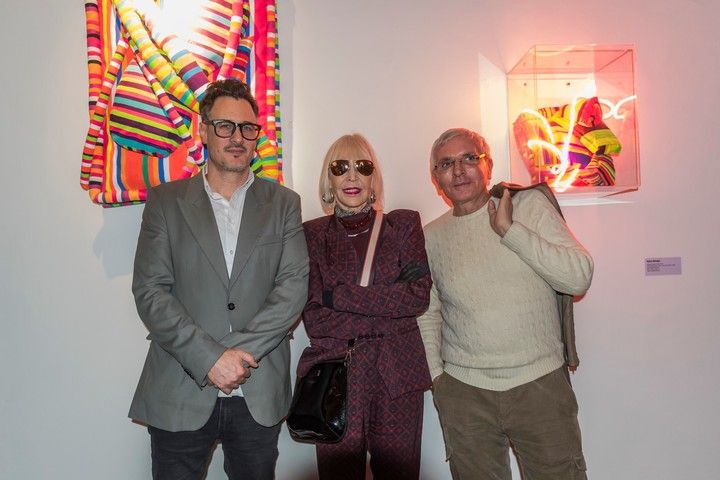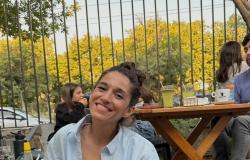Love weighs as much as existence, as much as life, as death. So How much does love weigh? The question is universal, the answer personal. The large exhibition recently opened in the Recoleta Cultural Center takes the question as title and trigger, deploying it through more than 120 works –made between the late 1940s and the present– 64 national and international artists. They are photographs, installations, videos, paintings, sculptures, objects, belonging to public and private institutions and collections in the country.
“According to Nietzsche, love makes us human, too human. Love is one of the most complex and multifaceted concepts that exist; It represents a force that transforms our lives and can lead us to ecstasy or maximum desolation. Life and death, in the parable of love, play a crucial role in the plot of our stories. And although my young daughter trusts that love does not have to hurt, for Nietzsche, ‘love is a suffering that should at least be attempted once,'” writes Daniel Fischer, curator of the exhibition.
It was her daughter Yuliana, 7 years old, who after seeing in a book the sculpture “Sea of Tears”, by Pablo Suárezconcluded with the irrefutable and wise logic of childhood, that love and pain should not be compatible.
This resin sculpture of a naked man, whose body begins to flood with the incessant crying, awaits us. Yes ok there are nucleithe curatorial and exhibition approach makes it possible to create one’s own path for the 1,500 square meters of the Cronopios, J and C rooms.
In the center of the first of them, the impressive installation by Carlos Herrera takes us into a structure from which flowers, textiles, stuffed animals, bones and more hang, which time will modify. Is he artist’s tribute to his father, florist, on the occasion of his death. Poignant memento mori that remembers the transience of life, bonds and experiences.
A network of colorful and delicate ceramic flowers, by Gabriel Baggio, wallpaper a sector perhaps as another offering. It is black flowers that emerge from the vase represented in the painting by Daniel García, which recalls the face of love. While Vicente Grondona’s sculptural vase with flowers is carved in charcoal. In this possible constellation that the eye notices (among many other possibilities) there is the delicate jewelry by Paula Toto Blake and Yanina Faour, inspired by the work of the former, where cocoons of carnivorous plants prevail.
Last year, towards the end of the previous Recoleta administration, another great sample under the concept of eternityalso curated by Fischer in the same rooms as the current one, was very welcome, as the artistic community felt that the visual arts could once again gain strength in said institution.
Maximiliano Tomaswho took over the direction of the historic cultural center last January after the change of city government authorities, made a commitment in that regard.
love to the world
“Love as mediation, love as a substitutionlove as a distinguishable, mutable and mutant space that transforms our DNA, love as a platform and as the possibility of building other worlds, love that conquers the path from erotic passion as “love without a world” to gratitude to terrestrial life as “love of the world”, as Hannah Arendt affirms,” writes Fischer.
The large balls of wool by Teresa Pereda are landmarks that warn about ecology and the paths traveled by the artist, uniting cultures and knowledge. “Shelter for a memory” is the title of Alexandra Kehayoglou’s installation with a quiet and lonely hammock in the middle of the green and leafy grove of a textile tapestry, waiting or remembering presences.
Like him too dense landscape of photographs by Ángela Copello as a lost or recovered Eden. Meanwhile, the imposing painting by Paula Senderowicz located at a height reveals an idyllic landscape that warns of its fragility.
The body with its knowledge, emotions, sufferings It is present in many productions. An intriguing motherhood proposes the photography of Nicola Costantino. The shocking polyptych by Ulises Mazzucca depicts contorting and dancing bodies that seem to conform to the limits of the frame. While in the installation video by Silvia Rivas, female bodies enter into struggle with their own conditioning and possibilities.
He too textile box by Celina Ezeiza proposes “Cubist ladies holding hands.” And a chromatic pictorial scene as a family portrait includes an oil painting by Nicolás García Uriburu. Women’s bodies are missing in the tulle nightgowns by Claudia Casarino who put together a ghostly installation, while the video by Soledad Sánchez Goldar speaks of the absence of a body forcibly disappeared by the last military dictatorship.
Furthermore, what was, loved and valued, and is no longer nested in the Bogotá-Berlín Suite, by Matilde Marín, who through 22 photographs remember the historic Berlin hotel. Fabiana Barreda’s work refers to bodies, to home.
Expressive hearts
Hearts could not be missing, different, expressive, in the embroideries of Claudia Del Río and in the paintings of Fernanda Laguna. And a romantic moon? illuminates the darkness of a sky in an acrylic by Amalia Amoedo.
Besides, there are hugs: in the oil painting by Carlos Gorriarena where two figures with their backs to their backs hug each other and walk leaving the traces of their shadows, and in the work of Hernán Marina. Love also finds a metaphorical place in the idea of weft, warp. Movements of dance steps invisible ones slide in Mónica Fierro’s tapestry of book pages.
Pablo Lehman’s drafts are added. And the striking and luminous installation by Daniel Joglar, which emulates a fishing net made with dozens of rosaries, in which history and personal, geographical, and cultural memory intermingle. The gaze rests festively on the vibrant chromaticism of Minujín’s intertwined mattresses.
The impressive set also includes works by León Ferrari, Marcos López, Débora Pierpaoli, Fabián Bercic, Antonio Berni, Delia Cancela, Ailí Chen, Cynthia Cohen, Flavia Da Rin, Petu de Mareca, Elisa Estrada, Yiyú Finke, Ana Gallardo, Edgardo Giménez , Sara Goldman, Yuyo Gardiol, Roberto Jacoby, Fabiana Larrea, Paloma Mejía, Ad Minoliti, Margarita Paksa, Alberto Passolini, Josefina Robirosa, Cindi Sherman, Jéssica Sandoval, Diana Schufer, Paola Sferco, Mariana Tellería, María Torcello, Monica Heller, Liliana Porter, Susana Pérez, Anatole Saderman, Luis Wells, Mónica Van Asperen and Paulina Silva Hauyon.
 InaugurationInauguration of the exhibition How much does love weigh? . Photo: Courtesy of the Recoleta Cultural Center.tion of the exhibition How much does love weigh? . Photo: Courtesy of the Recoleta Cultural Center.
InaugurationInauguration of the exhibition How much does love weigh? . Photo: Courtesy of the Recoleta Cultural Center.tion of the exhibition How much does love weigh? . Photo: Courtesy of the Recoleta Cultural Center.When we leave, we see again the installation of openwork papers in pink, by Manuel Ameztoy, at the top of the Recoleta patio. A horizon where love seems to float forever.
How much does love weigh? It can be visited at the Recoleta Cultural Center (Junín 1930) until September, from Tuesday to Friday from 1:30 p.m. to 10 p.m. and Saturdays, Sundays and holidays from 11:15 a.m. to 10 p.m. Free admission.









